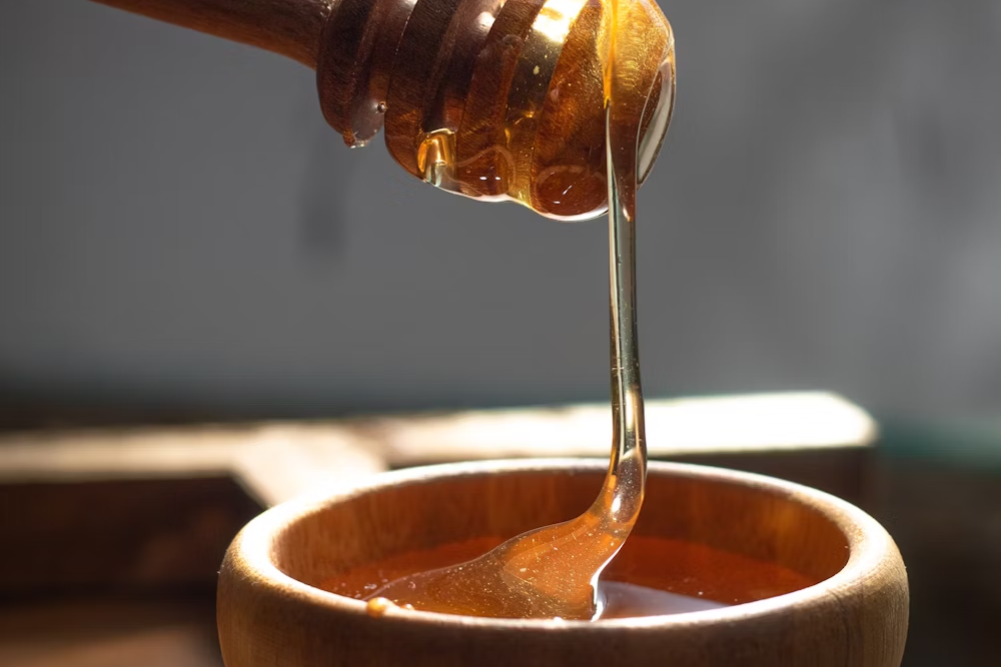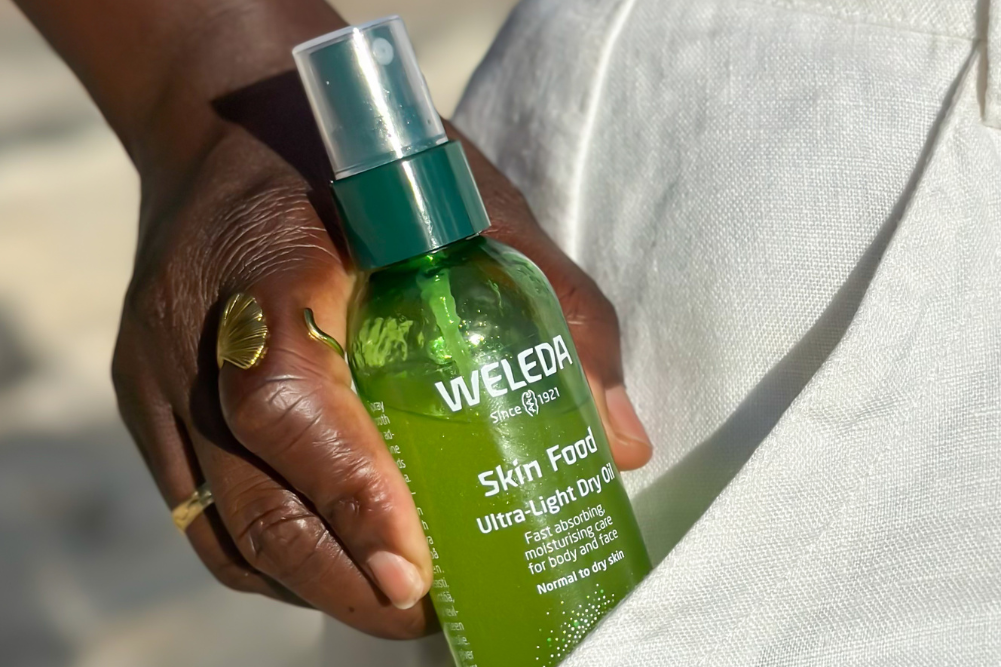Detox for your skin
It accounts for more than 10 per cent of your body’s weight and if spread out could cover almost two square meters. It defends us from harmful microbes, it enables us to communicate about pleasure and pain, it breathes by absorbing oxygen from both the bloodstream and the external environment and contributes to maintaining internal conditions by moderating water and heat. Needless to say, our skin is a truly amazing organ. In addition, our largest organ is also one of the body’s major elimination channels and plays an important role in excreting toxins during a detox.
Skin physiology
Between midnight and 4am a new base layer of skin cells is created. The layer grows toward the outer surface and is shed after 27 days. The characteristic of rapid turnover means the skin is an important ally during a detox, particularly when heavy metals and pesticides need to be released. Any damage these toxins inflict on the skin can be repaired fairly quickly.
Twenty layers of dead cells on the skin surface cover and protect the delicate underlying skin cells. An unseen population of beneficial microorganisms resides in this epidermal outer layer. They are busy breaking down fats produced by sebaceous glands to maintain a pH inhospitable to harmful microorganisms.
Like a spaghetti junction, there are innumerable tube-like structures that innervate, feed and drain within skin tissue. For every square centimetre of skin there are 15 sebaceous glands, a metre of capillaries and four metres of nerve endings. Both the blood and lymph fluid can be affected by specific skin treatments, which aids in movement of toxins through this area.
Toxic skin
Toxic skin is easy to recognise. Vital radiance is usurped by a general dullness. The tone of the skin is becomes flaccid and dehydrated rather than turgid and full. Instead of a soft fresh appearance, the skin is thick and even slightly hardened. Areas of redness in the face may indicate internal over-acidity. Pallor may indicate unhealthy or deficient blood, commonly of oxygen carrying haemoglobin and the other nutrients required for that process.
Blemishes on the skin can be aligned with internal toxicity as well as external cleansing factors. Even hormonally triggered acne is partly attributed to a sub-optimally functioning liver unable to metabolise hormones quickly enough.
Excretion organ
The skin is a porous surface. Certain substances can continually pass in and out of it. Therefore, you can nourish your skin both internally and internally. When you sweat, the water that leaves you can contain both fat-soluble toxins and heavy metals. Excretion of dangerous toxins such as pesticides, lead and mercury is far safer than excretion via the urine. The kidneys are also major detoxification organs, responsible for elimination of toxins through urine. They are delicate organs that can be damaged by abrasive toxic compounds. Additionally, unlike the liver and skin, the kidneys are unable to regenerate themselves. Since the skin has a large surface area, excretion can occur spread over a large space, thereby diluting any damage that may be caused.
What not to do
Sometimes good health choices are about what you leave out. Be selective about the products you use on your skin. Educate yourself about what’s in the products you are using.
Ask yourself, is this skin product safe enough to eat? If so, then lather away. If the ingredient label is a maze of chemical names that make your head spin, reconsider putting it on your skin and certainly think twice about applying it to babies’ or children’s skin, which is even more permeable.
There are a couple of chemicals that should be omitted from your skin care ritual. If you are totally enamoured with a chemical-rich product, consider using it only for special occasions, not every day, to reduce the burden.
Avoid products containing sodium lauryl sulphate (SLS). This chemical is found in many foaming products like soaps, shampoos and toothpastes. It essentially acts as a detergent to break down fats and is called a synthetic surfactant. It alters the naturally produced fats on the skin surface, disturbing pH and consequently weakening the barrier to the outside world. Adverse health effects from using SLS include dry skin, dermatitis, impaired hair growth and eye problems.
Instead, try castile soap or a vegetable-based SLS-free soap for washing. Moisturise and nourish the skin with a simple basic moisturiser or oil after washing. In his book Eating for Beauty, David Wolfe suggests avoiding soaps entirely, advocating a teaspoon of lemon juice or apple cider vinegar diluted in 200mL of warm water. Virtually all shampoos contain corrosive detergents, so consider using a SLS-free conditioner to wash your hair and rinse well. Hair follicles are particularly susceptible areas for toxins to enter the body.
Products containing aluminium should also be avoided. Aluminium toxicity has been associated with osteoporosis, cancer, senile dementia, kidney and lung disorders and allergic reactions. It is often put on the skin via deodorants and cosmetics. Aluminium-free deodorants are available and will generally not suppress perspiration. Instead they focus on reducing bacterial growth in the sweat to stop odours. Choose natural deodorants that contain plants with antibacterial action, such as tea tree and sage.
Synthetic fragrances are definitely something to avoid. “Fragrance” is by and large an unregulated area of toxicology. Fragrances are often stabilised by a chemical called a phthalate. Phthalates are also found in skin moisturisers. This is a chemical associated with oestrogen-like activity in the body and should be avoided.
Azo dyes, benzoates (a common preserver), salicylates and amines are synthetic triggers for skin rashes in some people. Alkylphenol ethoxylates (PEGs) used in many shampoos and shaving creams have been linked with hormonal, neurological, immune and reproductive problems. Also the parabens, used as preservatives in many skin (and food) products, have been noted due to their hormone-mimicking effects. This is certainly not a complete listing of problematic synthetic chemicals found in common skin products but more information is easily available online (www.ewg.org) or in books such as The Chemical Maze.
Studies on poor, innocent animals show that skin penetration rates of toxins are higher than originally considered. The rate of absorption is dependent on numerous factors including concentration and dose, the form it takes (liquid, vapour, solution), where it is applied (more hair follicles means more absorption) and what solvents are used as well as individuals’ differences of skin metabolism, age and sex. The bottom line is that anything that can dissolve into fat (referred to as lipid soluble) can penetrate into the skin. The lower layer of skin, the dermis, can become a reservoir for lipid loving compounds, like persistent-organic pollutants (POPs) and other synthetic chemicals.
Air bathing
Air bathing stems from the nature-cure tradition of “atmospheric cure”. It involves exposing the naked body to air for periods of time. Air bathing can take place indoors or outdoors and is not reliant on light. Ideally the air should be fresh, so choose a well-ventilated room populated by lots of indoor plants.
Benjamin Franklin apparently practised air bathing each morning on waking as he found it enhanced his “mental work”. Air bathing was supported by many nature doctors of years past. In 1898, Dr Lahman suggested that the poison from sweat was five times more potent than urine and frequent air bathing prevented the self-poisoning that resulted from clothing. One can only imagine what he would have to say about synthetic clothing which often prevents the skin from “breathing” at all.
At the turn of last century, Dr Lenki established that 20—30 degrees Celsius constituted a tepid air bath, 14—20 degrees a cool one and below 14 degrees meant a cold-air bath. It was suggested that tepid air baths improved blood health. Herbert Shelton later reiterated this, saying that 20 minutes of air bathing reduces hydrogen ions in the blood stream, effectively alkalising the blood.
Dr Webb, also working at the beginning of the 1900s, suggested that our skin actually atrophies because of our overuse of clothing. It was considered that a cool air bath would stimulate skin nerve endings to strengthen the skin and increase its vitality and elasticity. Air bathing was also considered to increase the blood supply to the skin, increase heat production in the muscles and increase the metabolic rate.
The best time to air bathe is first thing in the morning. Start with three minutes and build up to 20 minutes of wandering around starkers. If you do too much at once, one can become tired during the day. Avoid getting a chill, and people with kidney disease, cardiovascular disease and rheumatism were traditionally told not to take air baths.
Once you do put some clothes on, choose to wear natural fabrics that allow the skin to continue to breath.
Skin brushing
Dry skin brushing before showering each day is a simple, extremely effective way to keep the skin surface in vital condition and support ongoing gentle detoxification. The flow of lymphatic fluid is enhanced through gentle daily dry skin brushing, which reduces pooling of debris — like large proteins, fatty acids and toxins — in the skin’s connective tissue. Efficient movement in the fluids outside the skin cells helps maintain firm and vital skin.
It’s very important to use a vegetable bristle brush, not one with synthetic fibres. Naturopath and beautician Jenna Vos from Quintessence Natural Health and Beauty in Byron Bay suggests the rounded tips of natural fibres work with the skin, unlike the chiselled edges of synthetic fibres that can micro-cut the skin surface.
Following Emil Vodder’s technique of manual lymphatic drainage (MLD), Vos recommends always brushing away from the heart during dry skin brushing. Performing strokes from the centre out to the periphery helps to clear lymphatic channels by opening the valves of the lymphatic system and enabling a clear flow of lymph fluid through the superficial layers of the skin.
Start stroking near to the armpit, where a cluster of lymphatic nodes is located. Gently stroke down towards the fingertips, using circular motion. Imagine you’re drawing spirals down each arm. Stroke down both front and back of each arm. Another lymph cluster in the groin is the starting place for strokes all the way down to the feet. Then, make strokes from the belly button to the groin areas. Follow this with strokes from the buttocks around to the front of the hips.
According to the Vodder technique, using this lymphatic drainage technique on the right side of the body supports the right brain and liver. Stroking the left side acts on both legs, the gastrointestinal tract and the left brain.
The skin must be stroked skin gently at a pressure that is comfortably firm. Using circular motions helps open the lymphatic ducts, particularly at the “watersheds”, the areas housing clusters of lymphatic nodes. Some MLD sites suggest that counter-clockwise strokes should occur on the abdomen, as counter-clockwise strokes are relaxing. Clockwise strokes are more revitalising and are recommended for use in the mornings.
Perform gentler strokes on the tender skin of the inner thighs, arms and decoutage. Avoid the delicate facial skin all together. When starting dry skin brushing, begin with light strokes for short periods and increase pressure and duration gradually. This is an enjoyable process and should never be uncomfortable.
Dry skin brushing stimulates circulation of blood and lymph fluid to support health detoxification and skin regeneration. It sheds some of the dead surplus cells, creating vital skin and clear pores, enhances skin tone and cell renewal, reduces any lymphatic congestion and stimulates glands. It’s also a great opportunity to care and appreciate your marvellous skin every day.
Clay
Kaolin clay is white, high in calcium, zinc, silica and magnesium and is beneficial for oily skin due to its mildly drying and disinfectant effect. Bentonite, or green clay, contains the negatively ionic-charged mineral montmorillonite. Structured like plates piled on top of each other, montmorillonite is magnetic to toxins, drawing them in and trapping them between the plates. When the clay is washed away, the toxins wash off, too.
Soaks
The skin is not only an organ of elimination; in its own way, it also breathes and eats. Absorption through the skin is reliant on size and fat solubility. Taking a long soak in mineral springs has a long tradition in natural health care. Soaking in the ocean can bring about similar benefits. A magnesium sulphate (Epsom salts) bath is a traditional method of restoring tired muscles after exercise or unaccustomed muscle use. Soaking in warm or hot water increases circulation and opens the pores of the skin to enable some of the mineral salts to absorb in providing a double action of repair and relaxation.
Homebody detox spa
Here is a skin-cleansing procedure that you can follow at home. Mix two flat dessertspoons each of bentonite clay, sea salt and Epsom salts with four dessertspoons of organic plant oil. Macadamia or hemp oil is the best. Add eight drops of your favourite essential oil — for example, peppermint eucalyptus or grapefruit. Blend together and massage into the entire body; omit your face. Lie in the sun for 10 minutes prior to washing off in the shower or submerging into an Epsom salts bath for a mineral soak.
Sweating it out
Sweat is water with many compounds dissolved in it. In “healthy” sweat, these include sodium, chlorine, potassium, magnesium, calcium, ammonia and uric acid. Additionally, copper, lead, zinc, mercury, nickel, cadmium, aluminium, dioxins and DDE (a POP similar to DDT) can all be dissolved and exit the body tissue in sweat.
Sweat contains a protein, or antibiotic peptide, called dermcidin, which is effective against bacteria such as E. coli and golden staph (Staphylococcus aureus). Sweat is a boon for the body as it discharges toxins, renews the immune system and regulates heat.
Saunas are great detoxifying aids because they create a huge sweat. Saunas and their detox potential are fully explored elsewhere in this publication.
Internal supports
Since the skin is the furthest organ from the digestive system, it’s the last to receive nourishment, suggests David Wolfe in his book Eating for Beauty. Foods rich in silicon, sulphur, vitamins A, C and E and other antioxidants are fundamental in supporting healthy radiant skin.
MSM (methyl-sulfonyl-methane) is one supplement highly recommended by David Wolfe. He suggests it helps rejuvenate the liver and assists in getting the sulphur-rich compounds from a nutrient-rich diet to the skin. All of these nutrients, coincidently, support the detoxification processes of the body. Supporting collagen regeneration and stopping it from being damaged through oxidative stress is so important for continual good skin.
There are many excellent herbs that provide great benefit for skin detoxification and a standout among them is stinging nettle. Nettle (Urtica spp.) supports the kidneys and is rich in many minerals. When kidney function is promoted, the skin is supported in its toxic-waste role. Jethro Kloss, in his classic natural-health living guide Back to Eden, recommends that strong teas of red clover (Trifolium pratense) or chickweed (Stellaria media), drunk instead of water each day, will resolve most skin diseases.
Chlorophyll, having a similar molecular structure to haemoglobin, is a traditional blood deodoriser. It is often available from health-food shops, scented with mint. Drinking a plentiful amount of good water is possibly one of the most important steps to skin health and supporting ongoing gentle skin detoxification. Drink one or three large glasses of water on rising to start your day off the right way — ideally naked.
Problems
During detoxification, it is not uncommon for the skin to develop rashes or outbreaks. How you deal with these is of fundamental importance in terms of how successful the detoxification process is.
Dr Constantine Hering, a prominent homeopathic doctor of the 1800s, developed a Law of Cure to provide an explanation of the way the body undergoes the process of cure. Hering’s law has four major premises: cure will occur first in the most vital organs and then in less important ones, cure occurs in the upper to lower body and from the inside to the outside, and complete cure will clear the most recent (suppressed) illnesses before older (suppressed) illnesses, in reverse chronological order.
The functioning of organs, such as the lungs, kidneys, liver and heart, is more vital to the immediate survival of the body than the functioning of the skin. Therefore, according to Hering’s law, disruption to the skin can be taken as a sign that healing of more vital organs is underway.
During detoxification, a “healing crisis” can occur whereby the person can become “worse” before they get better. This may entail bringing past illnesses to the surface, particularly if they had not been fully resolved or suppressed though medications. A resurgence of chicken pox-like pustules or eczema can occur. The symptoms of a “healing crisis” create less bother than the original disease’s symptoms. Although they may be intense, they resolve faster, within a few hours to a few days. Such resurfacing of old illnesses is a great sign of healing during a detox program.
If the skin reacts negatively, as with any detox “crisis”, don’t suppress the reaction. Rather, support further by enhancing skin repair and regrowth from within and without. Adopt the tools that are appropriate to the eruption. Consider the excellent support afforded skin from aloe vera (Aloe sp), calendula (Calendula officinalis) or even golden seal (Hydrastis Canadensis).
Don’t forget to support the other detoxifying organs, too. Overriding all of this, have ultimate faith that with the correct support your body’s healing abilities will resolve any minor hurdles as efficiently as they can.







